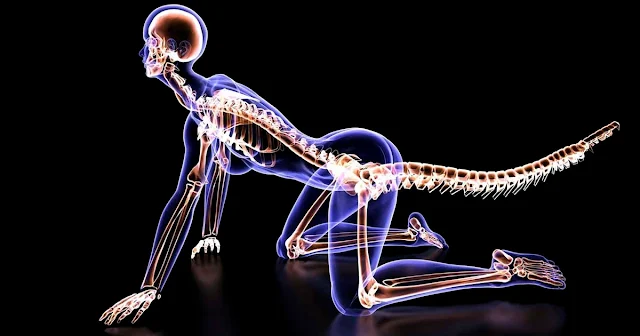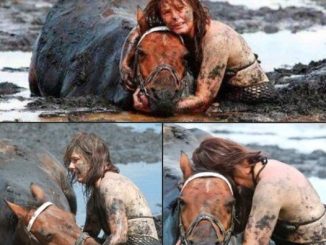One of the most remarkable changes in human evolution is the loss of our tails, a transformation that occurred around 25 million years ago. This pivotal shift not only altered the trajectory of our species but also marked a significant moment in the evolutionary history of primates. While scientists have long speculated on why humans lost their tails, the genetic cause has remained elusive—until now. A recent study published in Nature has finally uncovered the genetic factors responsible for this evolutionary change.

The Quest to Understand Tail Loss
The journey to unravel the mystery of human tail loss began in an unexpected way. Bo Xia, a graduate student at New York University, was inspired to investigate the origins of the human tailbone after injuring his own coccyx. This personal curiosity led Xia and his team to embark on a groundbreaking scientific investigation.
Through careful research, the team focused on the TBXT gene, which plays a crucial role in regulating tail length in various species. Their research revealed a unique genetic mutation within this gene, providing a major breakthrough in understanding human evolution.
The Role of Jumping Genes
A key aspect of this discovery lies in the role of Alu elements, often called “jumping genes.” These genetic elements, specific to primates, can move within the genome and cause significant changes. The researchers found that Alu elements inserted themselves into the TBXT gene, triggering a chain reaction that led to the loss of our tails.
This insertion activated a process known as alternative splicing, where RNA molecules are cut and restructured, which ultimately led to the deletion of a crucial exon. This change altered the structure and function of the resulting protein, leading to the tail loss seen in humans.
Validation Through Mice Studies
To confirm their findings, the researchers engineered laboratory mice with the same genetic mutations found in humans and apes. These genetically altered mice lost their tails, providing compelling evidence that the identified mutation plays a crucial role in the absence of tails in humans and other primates.
However, the study also uncovered a downside to tail loss: an increased risk of neural tube defects, such as spina bifida. This finding highlights the complex balance between evolutionary benefits and potential genetic trade-offs.
The Broader Implications
This discovery has profound implications not just for understanding human evolution, but also for human anatomy and health. The loss of our tails was not a random event but a genetic adaptation with lasting consequences. It illustrates the complex relationship between genetic changes and the way they shape our physiology over time.
As we continue to study our evolutionary past, these findings remind us of the intricate process of natural selection and genetic innovation that has shaped humanity. This breakthrough also underscores the power of scientific inquiry in uncovering the mysteries of our origins, offering insight into the past that can help us understand our future.
The identification of the genetic reasons behind tail loss is a testament to the persistence of scientific exploration and the ongoing quest for knowledge about our evolutionary journey.
My Stepdad Said He Doesn’t Eat the Same Meal Twice and That My Mom Should Cook Fresh Food Every Day — So I Gave Him a Wake-up Call

My stepdad demanded a fresh-cooked meal every day, like it was the 1950s. When my mom tried reheating leftover food, he tossed it and said real wives cook daily. I watched her shrink under the man who’d forgotten what gratitude looked like. So I served him a taste of humility.
After Dad died six years ago, my mom, Colleen, moved through life like a ghost. They’d been college sweethearts, married for 32 golden years with the kind of love that doesn’t need spotlights. He’d bring her coffee every morning and kiss her temple before leaving for work. She’d fold his socks the way he liked—paired and rolled, never bunched.

A sad older woman | Source: Pexels
I called her every day from two states away, but phone calls couldn’t fill the empty chair at her dinner table.
“I’m fine, sweetie,” she’d say, but I could hear the hollowness in her voice.
Then came Raymond. He worked with Mom at the community college. He was an accounting professor with slicked-back hair and cologne you could smell before he entered a room. He started bringing her lunch and offered to fix things around the house.
I was relieved someone was there, checking in on her when I couldn’t.

A relieved and delighted older woman leaning on a man’s shoulder | Source: Pexels
“He makes me laugh again, Matty,” Mom told me over the phone. “Do you know how long it’s been since I really laughed?”
Raymond always lingered and he somehow landed a place in her heart. The proposal came fast, and the wedding even faster. A beach ceremony with just 20 people… sand between toes. The whole thing looked sweet in pictures.
Mom wore a simple white dress, and Raymond looked genuinely happy. I pushed down my reservations and hugged them both.

A newlywed senior couple looking happy | Source: Pexels
“Take care of her,” I whispered to him.
“Always,” he promised, patting my back a little too hard. “Your mom deserves the world.”
I wanted to believe him. Maybe that’s why I ignored the way he interrupted her during the reception, or how he complained about the cake being too sweet.
“Marriage is about compromise,” Mom said when I mentioned it later. “We’re both adjusting.”
I was genuinely glad she’d found someone again. Someone steady. Someone who loved her. But God, I was wrong… so, painfully wrong.

A happily married couple posing for a photo | Source: Pexels
Six months later, I showed up at their doorstep with a basket of fresh muffins and enough clothes for a week-long visit. Mom hugged me tight, her frame smaller than I remembered.
“You’ve lost weight,” I said, studying her face.
She waved me off. “Just trying to keep up with Raymond. He’s very particular about what he eats.”
We settled in the kitchen with tea. Mom was in the middle of telling me about her garden when she suddenly pressed her fingers to her temple.
“Mom, are you alright?”
“Just a little headache, dear,” she said, wincing. “I’ve had this cold for a week now. Nothing serious.”
Her complexion was pale and her eyes were underlined with shadows. This wasn’t just a cold.

A shaken young woman | Source: Pexels
“Have you seen a doctor?”
“Raymond says it’s just allergies. I’ll be fine after I rest.” She stood up and opened the refrigerator. “I made lasagna yesterday. It’s really good… your grandma’s recipe.”
She was pulling the container out when Raymond walked in. He was wearing a golf shirt, his face flushed from being outside.
“What’s for dinner?” he asked, not bothering to greet me.
“I thought we’d have the leftover lasagna. I’m not feeling like cooking something new tonight.”
Raymond’s expression darkened. “Leftovers? Again?”

Lasagna in a glass tray | Source: Pexels
“It’s still good, Ray. I just don’t have the energy—”
The crash made me jump. Raymond swiped the container from her hands, sending it tumbling to the floor. Pasta, sauce, and cheese splattered across the tile.
“I’ve told you a hundred times. I DON’T eat the same meal TWICE. Am I a man or a pig? A real wife cooks fresh food for her husband every day. That’s your job now. Is that so hard to understand?”
Mom was already on her knees, picking up the mess. “I’m sorry. You’re… you’re right. I’ll make something else.”
I froze. In the six years since Dad died, I’d worried about Mom being lonely and sad… but never THIS. Never afraid. Never controlled.

An annoyed man staring at someone | Source: Pexels
I dropped down beside her. “Mom, stop. Let me help.”
Up close, I could see her hands shaking. “Does this happen often?”
Her silence told me everything.
“You can help by making something fresh, Matilda,” Raymond said, walking away. “I’ll be in my study.”
***
That night, I lay awake staring at the ceiling fan in the guest room. The image of Mom on her knees kept playing on repeat. I thought about calling the police, but what would I say? My stepdad broke a dish? Made my mother cry?
No. This required something else entirely.

A disheartened woman sitting on her bed | Source: Pexels
I found Mom in the kitchen at dawn, already mixing pancake batter.
“Let me cook today,” I said, taking the bowl from her hands.
She looked relieved. “Are you sure, honey? Raymond likes his breakfast at seven sharp.”
“I’m positive. You should rest… your cold sounds worse.”
She hesitated before nodding. “He likes his eggs over medium. Not too runny, not too firm.”
“Got it. Why don’t you go back to bed for a bit?”
After she left, I pulled out every cookbook in her cabinet and got to work.

A woman cooking a meal in the kitchen | Source: Pexels
Raymond came down at exactly seven, newspaper tucked under his arm. He raised an eyebrow at the spread I laid out—golden pancakes, perfectly cooked eggs, crisp bacon, fresh fruit, and steaming coffee.
“Well, look at this!” he said, taking his seat. “Colleen could learn a thing or two from you.”
I forced a smile. “Mom’s not feeling well. I thought I’d help out while I’m here.”
He took a bite of the pancake and nodded approvingly. “Now this is how a man should be treated in his own home.”
I bit my tongue so hard I winced through the copper tang.

A man eating pancakes | Source: Pexels
“I’ll handle the meals while I’m visiting. Mom needs to rest.”
“Best idea I’ve heard all week.” He pointed his fork at me. “Your generation could use more women like you… ones who understand the kind of fresh food men really need.”
I watched him eat, planning my next move.
For the next four days, I became a one-woman restaurant. Eggs Benedict for breakfast, hand-rolled sushi for lunch, and Beef Wellington for dinner. I made every meal from scratch, plated it like artwork, and served it with a smile that made my face ache.
“This is incredible,” Raymond kept saying. “I should have you visit more often.”

A woman pouring sauce on a plate of meat dish | Source: Pexels
By day three, he took photos of every dish and sent them to his friends on Instagram. “This is what real home cooking looks like, man! 🥩🍗🥘😋“ he bragged.
Mom watched it all with knowing eyes, saying little but squeezing my hand when Raymond wasn’t looking.
“You don’t have to do this,” she whispered on day four.
“Trust me, Mom. I know exactly what I’m doing.”
That night, I prepared his favorite meal—herb-crusted lamb with rosemary potatoes and glazed carrots. The table was set with candles and Mom’s best china.
“To good food and family,” Raymond toasted, raising his wine glass.
I clinked mine against his. “And to appreciating what we have!”

A plate of roasted lamb with mashed potatoes and rosemary | Source: Pexels
He was halfway through his meal when I said, “You know, it’s interesting how our taste buds work.”
“How’s that?” he asked, mouth full of lamb.
“Well, for instance, you’ve been eating variations of the same three meals all week, but because I presented them differently, you never noticed.”
His fork froze midway to his mouth. “What are you talking about?”
“That lamb? It’s the same one I made two days ago. I just cut it differently and added a new sauce.”
His face flushed. “No, it isn’t.”

A woman clapping her flour-dusted hands | Source: Pexels
“The potatoes are leftovers from yesterday. The carrots? Those are from the beef dish on Monday. I’ve been recycling ingredients all week, and you’ve been praising every bite.”
Raymond pushed his plate away. “That’s disgusting.”
“Is it? Because five minutes ago, it was ‘the best meal you’ve ever had.’ You even posted it online.”
Mom had appeared in the doorway, watching silently.
“You served me… leftovers??”
“Leftovers aren’t about laziness, Raymond. They’re about planning, efficiency, and not wasting food… something my father understood perfectly.”

Food set on a table | Source: Unsplash
Raymond’s face turned an alarming shade of purple. “How dare you trick me like this!”
“How dare you treat my mother like your personal chef when she’s sick? How dare you break dishes and make demands like a spoiled child?”
“This is between me and your mother.”
“It became my business when I saw her picking up broken dishes off the floor.” I turned to Mom. “Get your coat.”
“What?” Raymond and Mom said in unison.
“I made reservations at Antonio’s. The real one, not the leftover version.” I smiled at Mom. “You and I are going out. Raymond can heat up something for himself.”
Mom looked between us, her eyes wide.

A stunned senior woman | Source: Pexels
“Go,” I said gently. “Wait in the car.”
After she left, I leaned across the table. “My mother spent 32 years with a man who appreciated everything she did. She deserves nothing less now.”
Raymond’s nostrils flared. “You have no idea what marriage is about.”
“I know it’s not about fear.” I straightened up. “There’s plenty of food in the fridge. Try not to throw any of it on the floor while we’re gone.”

A woman with her arms crossed | Source: Pexels
At the restaurant, Mom was quiet until our pasta arrived.
“I should have said something sooner,” she finally whispered. “After your father… I was so lonely. Raymond seemed kind at first.”
“This isn’t your fault,” I reached across the table for her hand. “But it needs to end.”
A tear slipped down her cheek. “I’m 62 years old. I never thought I’d be starting over again.”
“You don’t heal in the same place that’s breaking you, Mom.”
“I want to be brave again, dear. I used to be brave.”
“You still are. You just forgot for a little while.”

A sad woman staring at her plate of pasta | Source: Pexels
I extended my visit by another week, helping Mom pack Raymond’s things while he was at work. We changed the locks and put his belongings in the garage.
When he came home and found his key didn’t work, he pounded on the door until the neighbors peeked out their windows.
“This is my house!” he shouted through the door.
Mom stood in the hallway, shaking but resolute. “I’m sorry, but this is my late husband’s house. You can say what you need to say tomorrow when you pick up your things. For now, please leave.”

A man trying to unlock the door | Source: Pexels
Later that night, after the shouting stopped and the house was quiet again, we sat on the porch swing like we used to when I was little.
“What if I made a mistake?” Mom asked, her voice small.
“What if you didn’t?”
She thought about that for a moment. “Your father would be proud of you.”
“He’d be proud of both of us.”
***
Three months later, Mom called me on a Sunday evening.
“Raymond left me a voicemail. He wants to come over and cook me dinner. Says he’s changed. He’s begging me to call off the divorce.”
“What did you say?”
“I told him I already had plans. I’m having lasagna tonight. The same one I made yesterday. And it’s delicious!”

A smiling senior woman looking at her phone | Source: Pexels
“And Mom? You know what goes great with lasagna? Freedom! And a kitchen where no one throws plates!”
Her laughter echoed like wind chimes.
Here’s the thing about entitlement: it eats itself. People like Raymond think they deserve service, but they forget love is never owed. It’s earned. And when you treat kindness like a chore, eventually, someone serves you a dish called consequences… with a garnish of get the hell out.

A woman holding a note with an insightful text | Source: Pexels



Leave a Reply